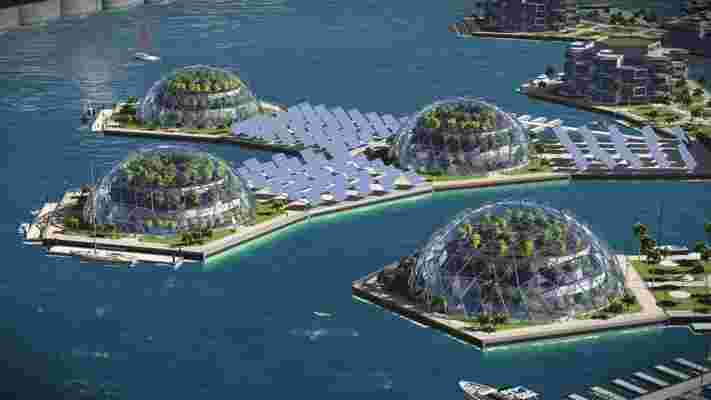Why French Polynesia Could Have the World’s First Floating City
One of the biggest challenges facing the world today is climate change. With each passing year, the rate at which our polar ice caps are melting is increasingly alarming to many across the globe. Recently in Antarctica, for example, new reports indicated that a major ice sheet is cracking at a rate of five football fields per day, lining up a potential break from the Antarctic Peninsula sometime this spring. Such reports are compelling some scientists, engineers, and architects to fundamentally rethink the cities of the future. At the forefront of that movement is the Seasteading Institute.

The California nonprofit organization—which has currently raised about $2.5 million from more than 1,000 interested donors—is spearheading a plan called the Floating City Project. The blueprint is to build a cluster of buoyant dwellings that showcases innovations in solar power, sustainable aquaculture, and ocean-based wind farms. Recently, the French Polynesian government signed a historic agreement with the Seasteading Institute to work together on a legal framework to allow for the development of the Floating Island Project. French Polynesia, which comprises more than 100 islands in the South Pacific, seems like an ideal locale to explore the possibility of sea-dwelling communities, as its own territory is at the mercy of rising ocean levels.
According to the agreement, after economic, environmental, and architectural research in and around French Polynesia has been completed (much of which has been under way for years), the government will collaborate with the Seasteading Institute to develop a “special governing framework” for a land base and sea zone. The goal is to achieve this by the end of the year.